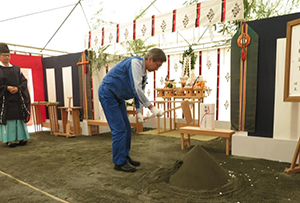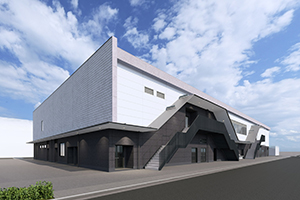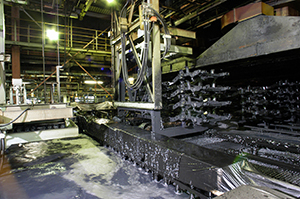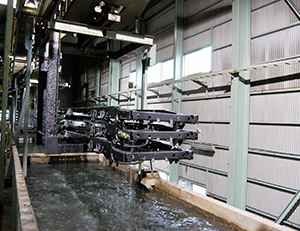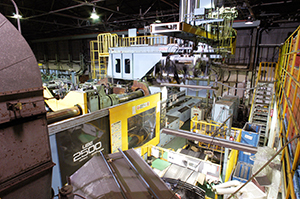1961
Groundbreaking ceremony held for Fujisawa Plant
Acquired factory land in Endo, Fujisawa City, Kanagawa Prefecture to expand production capacity in response to increased orders, and held a groundbreaking ceremony. In March, some functions were transferred from the Kawasaki Plant.
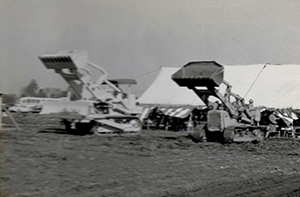
1961
Fujisawa Plant commenced operations
The wheel plant began operations ahead of schedule in July, and full operations started in October with the completion of the press plant. Phase 1 construction was completed in May 1962.
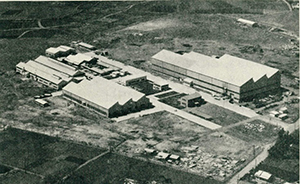
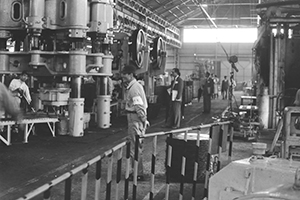
1965
Welfare Hall completed
To enhance employee welfare facilities amid company growth, a two-story welfare hall was constructed. The first floor had a clinic and lockers, while the second floor had a large cafeteria and conference rooms.
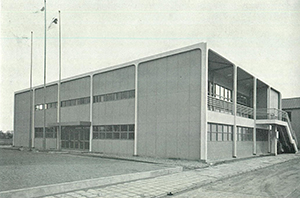
1965
Installed two 600-ton crankless presses in Komatsu Press Line
Additionally, in August, an 800-ton press was added to the Clearing Press Line, further enhancing production capacity.
Video playback is available.
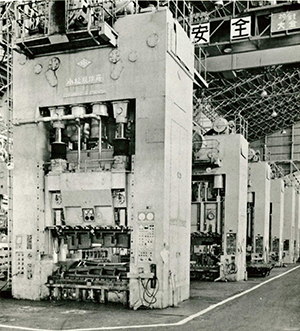
1967
Started production of Isuzu Unicab
Began producing 200 units per month. Entered the complete vehicle assembly business.
Video playback is available.
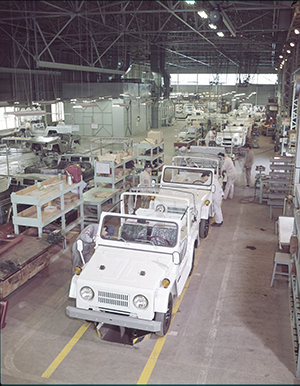
1969
Installed 4,000-ton single-action crankless press machie
This enabled integrated production of small truck frames for Isuzu at the Fujisawa Plant.
Video playback is available.

1970
Vehicle Plant completed; Started production of Nissan Patrol
Constructed a vehicle assembly plant with a monthly production capacity of 2,500 units and began producing the Nissan Patrol. Full-scale vehicle assembly operations commenced.
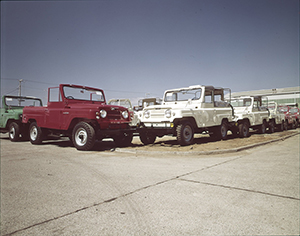
1973
Technical Research Center (Now R&D Building) completed
To enhance research and development, a two-story Technical Research Center was constructed on the plant premises.
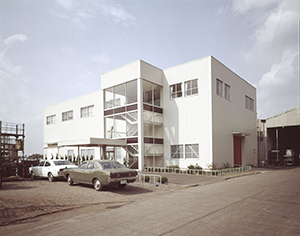
1974
Frame assembly line completed
Installed two conveyor lines in a newly constructed building, integrating assembly of riveted and welded frames. Coordination with the painting line was also enhanced.
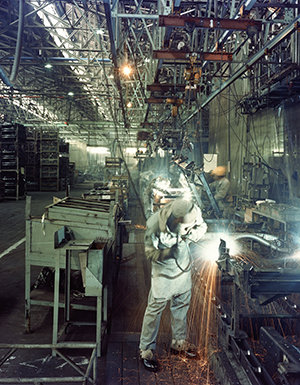
1979
New office building completed
Constructed a three-story office building to consolidate dispersed offices resulting from increased staffing.

1981
Started production of Isuzu’s first-generation Bighorn
Began producing a 4WD vehicle jointly developed with Isuzu Motors at the vehicle plant, with a planned monthly production of 2,000 units.

1983
Installed 1,500-ton transfer press
Installed to improve productivity of suspension and panel components.
Video playback is available.
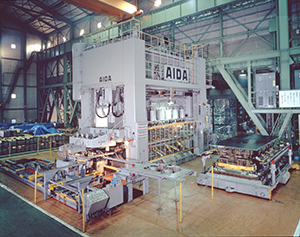
1983
Started production of plastic parts
Started production of console panels using a 200-ton injection molding machine introduced in 1981.
1985
Introduced cationic coating for frame painting
Implemented in response to the demand for improved corrosion resistance of chassis parts.
1990
Installed 2,500-ton and 800-ton injection molding machines
Established a plastic section and began producing interior parts for the Bighorn.
Video playback is available.
1991
Started production of axle units for light-duty trucks
Started production of axle units for light-duty trucks for Nissan Atlas.
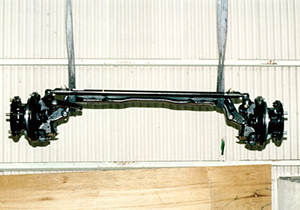
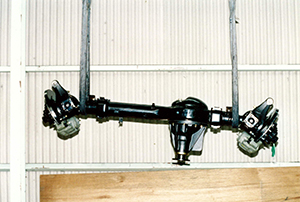
1991
Started production of Isuzu’s second-generation Bighorn
Following the final unit of the first generation going offline, began production of the long-wheelbase four-door model for the domestic market.
Video playback is available.
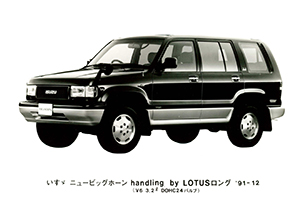
1993
Commenced operations of the frame line for Isuzu’s fifth-generation ELF
Achieved significant streamlining and support for high-mix, low-volume production through automation of the welding line and side member drilling, as well as integration with the production control system.
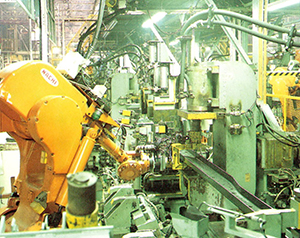
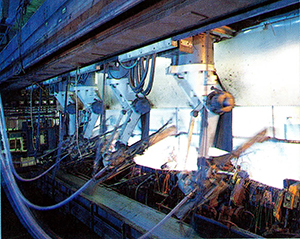
1995
Acquired ISO 9001 certification
1996
Transferred production of the Bighorn back to Isuzu Motors
Due to declining production volumes, production was consolidated from parallel manufacturing by both companies to Isuzu Motors alone.
1997
Began pre-delivery Inspection (PDI) operations for GM Saturn
Following the launch of pre-delivery inspection operations for GM Saturn in 1997, a production system was established at the vehicle plant, covering everything from painting to final vehicle assembly.
Video playback is available.
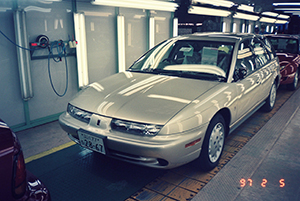
2001
Vehicle Plant closed
Concluded 34 years of vehicle assembly operations in the Kanto area and dismantled the equipment. The site was planned to be repurposed as a base for core product manufacturing.
2002
Transferred development and production of construction machinery cabs to Onomichi Plant
To improve efficiency in the construction machinery business, the development and production functions for construction machinery cabs were transferred to the Onomichi Plant.
2006
Started production of riveted frames for Isuzu’s sixth-generation ELF
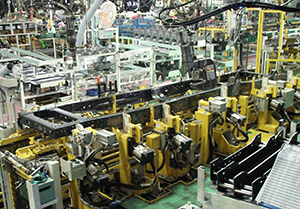
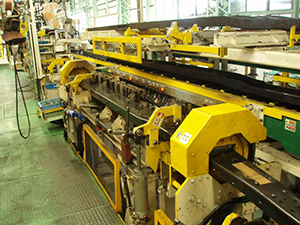
2007
Transferred production equipment for Isuzu heavy and medium-duty truck frames from Kawasaki Plant
In response to the closure of Isuzu’s Kawasaki Plant, production equipment for truck frames was transferred to the Fujisawa Plant as part of production restructuring.
2017
Parts electrodeposition coating line commenced operations
2020
Medium-duty axle welding and assembly line commenced operations
2023
Introduced shot blasting equipment for side member processing
Installed equipment to remove oxide film from the surface of steel materials. Improved corrosion resistance by enhancing the adhesion of the painting base.
2024
Equipment building completed
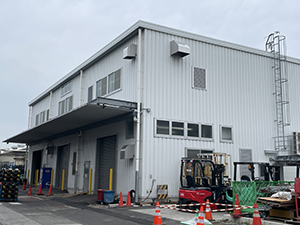
2024
New turbine compressor commenced operations
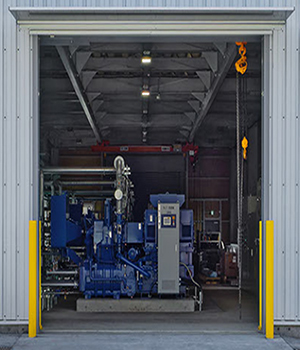
2024
Ground-breaking ceremony held for Welfare building
